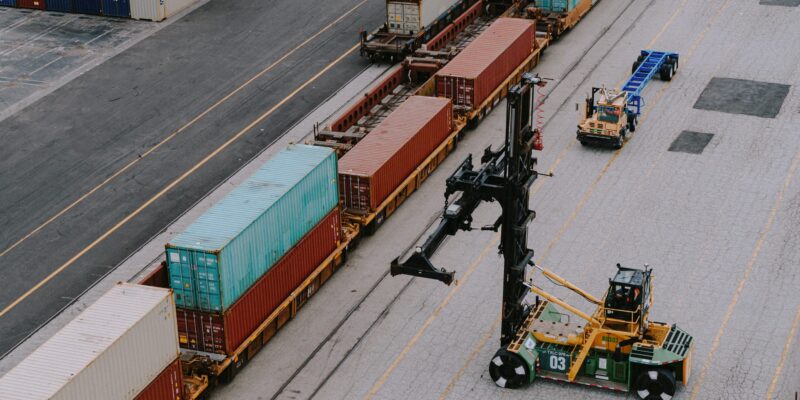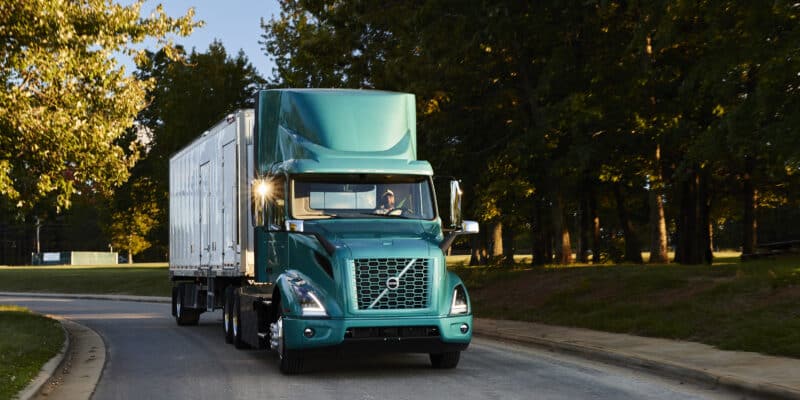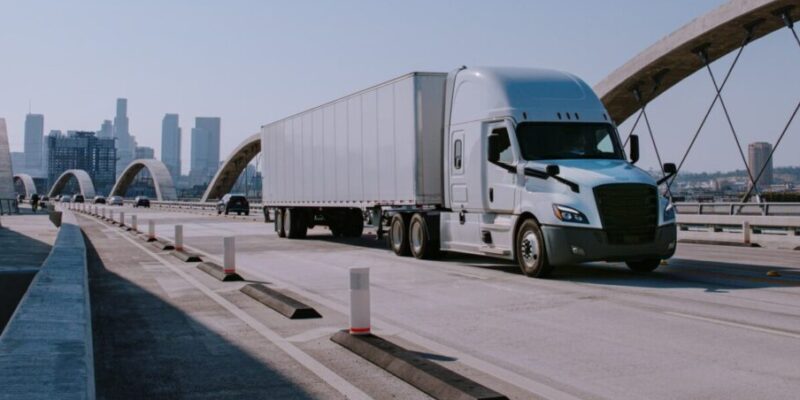How LTL freight tracking works and how Uber Freight does it better

By nature, less-than-truckload (LTL) shipping is often fragmented. It entails multiple shippers using the same truck to move their loads—which can get complicated, fast. Because LTL shipments combine partial loads to create full multi-stop truckloads, it requires more coordination and collaboration between independent parties throughout the fulfillment process. As a result, pick-up timing and shipment timelines can be harder to nail down. It’s easy for details to fall through the cracks when shippers have to share the same trucks. With robust LTL tracking capabilities, shippers can eliminate these complexities by making their logistics more efficient and transparent from point of origin to final destination.
Uber Freight’s LTL solution equips shippers of all sizes with visibility into shipment status through an accessible tracking dashboard, an easy-to-use payments portal, and a streamlined tendering experience, all under one unified platform. Many businesses struggle with gaining consistent live updates with their LTL shipments—Uber Freight’s dedicated support team takes the guesswork out by contacting terminals directly and relaying accurate shipment details.
For organizations that handle larger volumes of shipments, our team at Uber Freight can analyze historical performance data and monitor orders to share targeted, strategic recommendations for network optimization. Our end-to-end management solution can arm shippers with a control tower view of their entire transportation process, giving them unobstructed real time visibility across all moving freight—from LTL to FTL to flatbed.
Learn how you can elevate your LTL shipments with Uber Freight.
What is LTL tracking?
LTL tracking, also known as less-than-truckload tracking, is the process of monitoring and tracing shipments that are transported via LTL shipping methods.
LTL tracking allows shippers to access real-time information about their shipments. The LTL tracking system provides updates on the shipment’s status, including pickup, transit, and delivery milestones. This information may include the current location, estimated delivery date, any delays, and proof of delivery.
Shippers often engage a third-party vendor to secure LTL tracking capabilities to achieve better visibility into shipment status. Adopting a comprehensive transportation management system (TMS) is one way to integrate LTL tracking within an existing logistics framework.
With Uber Freight, shippers of all sizes can leverage the freight shipping services on Shipper Platform or a custom TMS solution to optimize and track their LTL loads. For small-to-midsize businesses (SMBs), the Shipper Platform offers a suite of tech-driven capabilities—including load consolidation and freight tracking—while helping them avoid a heavy upfront cost with transparent, real-time pricing. Our TMS solution also brings world-class logistics expertise to companies that prefer more hands-on support.
Check out how our offerings can bring more transparency to your freight journey.
Benefits of LTL tracking – why does it matter?
LTL tracking provides enhanced visibility and transparency, allowing shippers to monitor the movement of their shipments in real time, plan logistics accordingly, and address any issues that may arise during transportation. It improves shipment efficiency, reduces the risk of lost or delayed shipments, and enables better communication between all parties involved in the shipping process.
Complete visibility throughout the entire transit journey
LTL tracking systems allow shippers to know exactly where their shipment is, when it will arrive, and if it will be delayed—all in an instant.
Uber Freight’s TMS solution can arm shippers with 24/7, 360-degree control tower visibility into every step of a shipment’s journey.
Exception management mitigates challenges from unexpected delays
To move goods efficiently, shippers and consignees must proactively identify and address delays, missed pickups, route changes, and other issues. LTL tracking offers early insight into the transit journey that empowers shippers to take action quickly and minimize the impact of disruptions for their business and for their customers.
Thanks to Uber Freight’s one-stop shop Shipper Platform, shippers can easily get visibility updates and react with a solution in an instant. Our TMS goes the extra mile, offering automated routing and service-risk predictions to streamline issue management.
Detailed status enables business efficiency across the board
Consistent and accurate tracking status allows shippers to streamline the overall flow of their supply chain, including inventory management, production schedules, or customer notifications. All Uber Freight solutions are accessible via a streamlined, user-friendly digital platform, giving shippers detailed updates with just a few clicks.
Open communication facilitates seamless issue resolution and increased transparency
LTL tracking helps improve communication between shippers, consignees, and carriers. Uber Freight’s tracking system offers 24/7 customer support, enabling prompt responses to inquiries and issue resolution of any concerns. The platform is built for increased transparency—shippers can easily share shipment locations with the click of a button.
How does LTL tracking work?
LTL tracking systems provide shippers and consignees with the most accurate information about their shipment location status. By aggregating and analyzing barcode scans, the truck’s GPS data, as well as relevant documentation, LTL tracking services can enhance location visibility and transparency throughout the shipment’s journey.
Because information about a shipment’s location can come from a variety of sources, LTL freight tracking can take different forms:
Carrier tracking systems
Shippers can navigate to the carrier’s online portal and directly access necessary information about their shipment, including location, estimated delivery, and any potential delays. While this might work for certain shippers, it’s easy for information to slip through the cracks if shippers are working with multiple carriers for different shipments.
Electronic Data Interchange (EDI)
EDI is a method of exchanging information electronically between the shipper and the carrier. Shippers can establish an EDI connection with their LTL carrier to receive tracking updates automatically. EDI integration allows for seamless information exchange, eliminating the need for manual tracking. Like carrier tracking systems, EDI can be difficult for shippers with more than one carrier partner.
Automated notifications via email or SMS
Automated notifications can keep shippers informed about their LTL shipments progress. Notifications on the Uber Freight Shipper Platform offer proactive updates without requiring shippers to track their shipments themselves. This level of freight visibility is ideal for shippers of all sizes, but larger companies that deal with greater volumes of LTL loads may want to adopt an end-to-end transportation management solution to more closely monitor performance and strengthen their networks.
Real-time visibility platforms
Real-time visibility platforms offer seamless updates in a streamlined and consolidated manner so shippers can spend less time parsing data and more time doing the work that matters. Uber Freight leverages Descartes MacroPoint as a supply chain visibility platform partner to provide important load status updates to our TMS users. Shippers can access all of the information they need from one source, saving time and effort.
LTL tracking numbers explained
To easily track shipment status and location, LTL tracking systems use different tracking numbers. Each LTL tracking number allows shippers to track LTL shipments and ensures constant visibility into the shipment journey.
Shipping pro number
A PRO number, sometimes used as an acronym for progressive routing order number, is part of the tracking identification number that a carrier assigns to each shipment.
When paired with the carrier’s Standard Carrier Alpha Code (SCAC), a PRO number becomes a longer tracking number that gives shippers the ability to closely follow their shipments’ progress. Carriers create a new PRO number—and associated tracking number—before they receive a shipper’s load. This same PRO number is then printed on barcodes that label each pallet.
Master PRO number
If a shipper is sending multiple pallets in the same LTL shipment, carriers will consolidate the PRO numbers into one. One master PRO number makes LTL tracking even more efficient—allowing carriers to scan a single barcode at each stop and shippers to access all the information from one streamlined source.
Bill of lading number
When a carrier picks up a new load from a shipper, they receive a bill of lading (BOL) that details the contents of the load. This document serves as a written contract between both parties, and includes the shipment’s PRO number.
Each BOL document also has a unique number associated with it. While PRO numbers are typically used for LTL tracking, the BOL number serves as an additional measure to set shippers at ease. No matter what happens on the journey from origin to destination, shippers can access the BOL and PRO numbers to correctly identify and track their loads.
LTL tracking documentation explained
Like with any freight load, LTL shipping—and accurate LTL tracking—requires detailed documentation. Many of the necessary documents for LTL tracking are the same as those for FTL shipments. However, ensuring documentation is done right is even more critical when one truck is managing loads from multiple shippers.
Tender
A tender is the first document required when any shipper needs to send a load. Shippers will create a tender to request freight quotes or freight bids from carriers directly or via a brokerage or logistics platform.
The information included in the tender will be reiterated throughout future documentation so accuracy is critical at this stage. A detailed tender should include:
- Shipper information, including company contact information
- Pickup and delivery locations, including specific loading and unloading requirements
- Estimated pick up and delivery dates and transit time
- Shipment type, including a description of goods, their quantity, weight, dimensions, and any hazardous material classification if applicable.
- Packaging details (such as palletized, cartons, or crates) and any specific handling instructions
- Service requirements such as mode of transportation, equipment needs (such as refrigerated containers, flatbeds, etc.), and transit time
- Terms and conditions, including detailed information about payment, insurance, and dispute logistics
By providing accurate and detailed information in a freight tender, shippers can communicate their shipping requirements to potential carriers, allowing carriers to assess the shipment’s characteristics and provide accurate quotes or bids. As the first document in the shipping process, a clear and comprehensive tender helps streamline the LTL tracking process throughout.
Bill of lading
A bill of lading, often abbreviated as a BOL, is the written contract between the shipper and carrier. After a shipper accepts a bid on their tender and a rate confirmation is established with a carrier, a BOL is drafted to lock in the details of the load.
BOLs all receive a specific BOL number which is essential in LTL tracking for shippers to be able to access necessary shipping information, including the shipments PRO number.
A BOL includes the agreed upon service terms between the carrier and shipper in addition to many of the same—or updated—details from the tender. This information is critical to LTL tracking as it serves as an essential reference document and source of truth throughout the entire shipment process.
Proof of delivery
A proof of delivery document (POD) is the same document as a BOL, but with the important addition of a signature from the consignee, or shipment recipient. The document is obtained by the carrier’s driver, confirming successful delivery of the LTL load.
In LTL tracking, PODs serve as evidence that the shipment reached its intended destination. Shippers can use the document to verify the delivery and address any discrepancies or claims if necessary.
Weight ticket
Throughout their journey, trucks will visit weigh stations for scaling. Each section of the truck, front, mid, and rear steer, is weighed, and the driver receives a weight ticket as a result. Weight tickets provide verified information about the weight of the truck and the LTL shipments within.
While weight tickets are typically a required component of any shipping journey, they aid the LTL tracking process by serving as a documented checkpoint for shippers and carriers. Carriers can use weight tickets to ensure compliance with Federal Motor Carrier Safety Administration (FMCSA) guidelines and billing accuracy when invoicing shippers, but also to plan other loads and consolidate shipments. Overall, weight tickets help ensure transparency, accuracy, and integrity of LTL tracking processes.
Get better visibility into your LTL shipments with Uber Freight
LTL tracking doesn’t have to be a challenge. Uber Freight offers visibility into your shipment’s status directly from our TMS for shippers.
Sign up today to invest in the Uber Freight Shipper Platform for your business. Looking for more hands-on support? Check out our TMS solution here.



